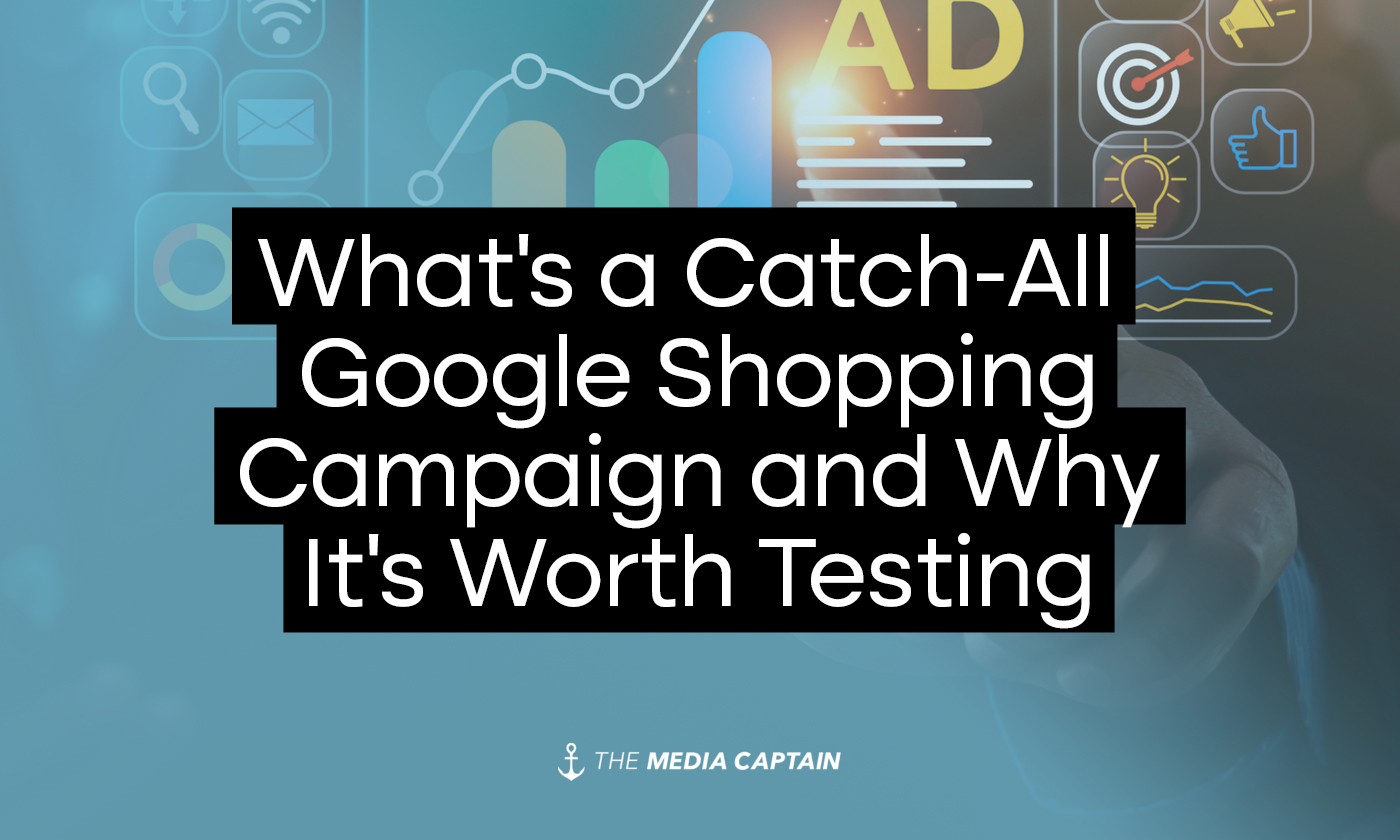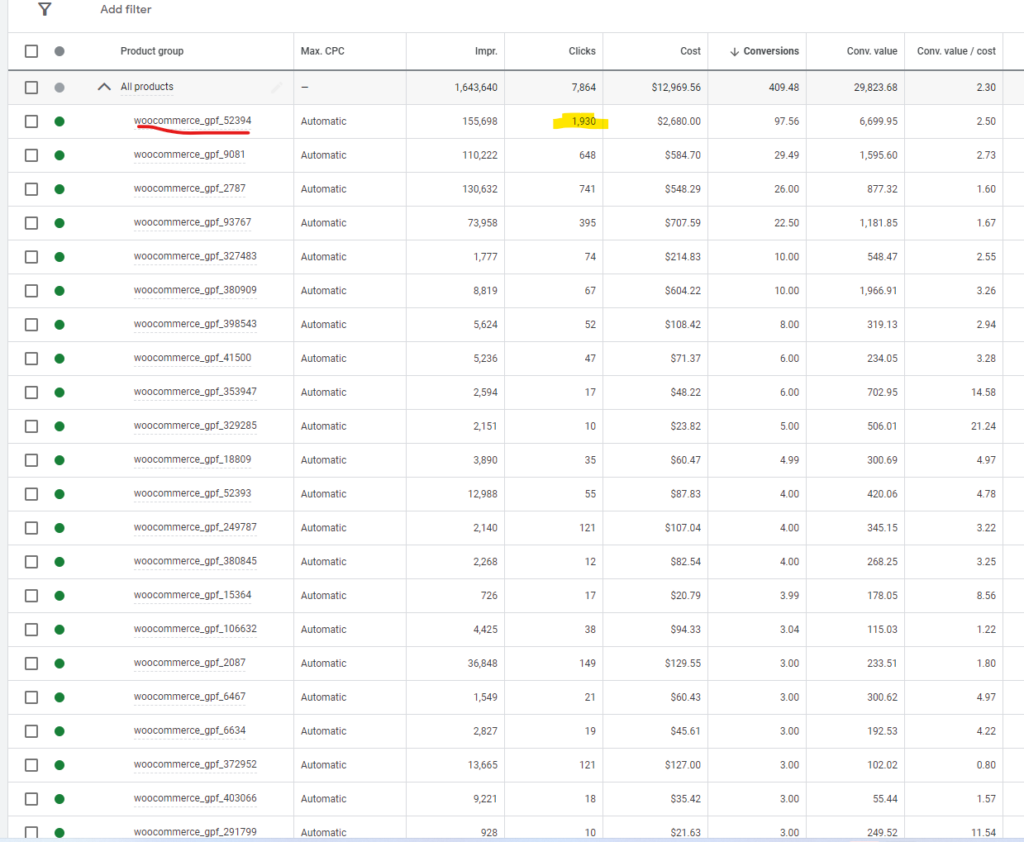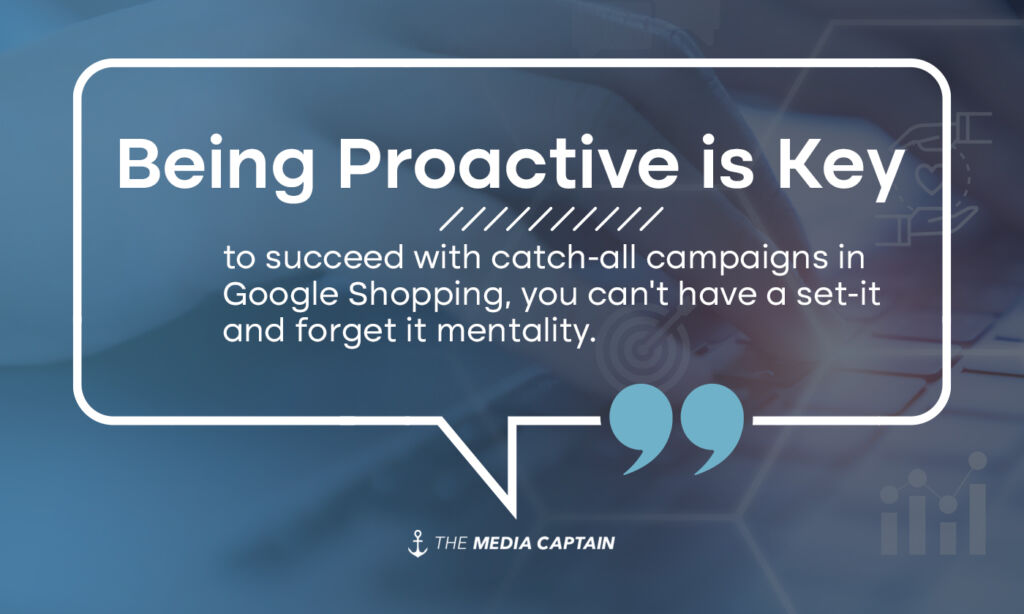A catch-all Google Shopping campaign is exactly what it sounds like. One big Google Shopping campaign with every product, allowing you to catch all of the potential searches and exposure for your catalog of products.
Rather than segmenting your products and splitting up campaigns by price point, brand, seasonality, or category (to name a few), the idea behind the catch-all campaign is to put all products in one campaign and let the data tell you which products are popular and profitable.
The data that comes through from a Catch-All campaign will allow you to pause performing products and build out new campaigns based on winners.
My Experience with Catch-All Campaigns
My favorite example of a Catch-All campaign was when I was managing Google Shopping for a sporting goods store during the COVID-19 pandemic. This client sold thousands of products. It ended up that team puzzles were their top seller at a 10:1 ROAS (return on ad spend).
There was a 3-month craze where puzzles were extremely popular, and this client capitalized on this by having a Catch-All campaign serving all of their products. If I had spoken with the client about the products we should offer via Google Shopping, puzzles would have never made the list.
Our marketing agency manages millions in ad spend on Google Shopping for clients across many verticals. We’re also one of the few agencies in the U.S. to own and operate a seven-figure eCommerce brand. Catch-all campaigns are included within our base Google Shopping structure in nearly all instances as we collect so much valuable data. We’ve also noticed a trend where ROAS is stronger in a campaign structure with many products, allowing Google to generate sales at profitable levels when there are more SKUs to work with.
We will walk you through an example of what Catch-All campaigns look like for DermWarehouse, our eCommerce company, so you have a strong visual understanding of how to structure this. Before doing so, I will tell you about the key benefits of a Catch-All campaign.
Related Blog: What is a Good Return on Ad Spend for eCommerce
Benefits of a Catch-All Google Shopping Campaign
Data
- Rather than guessing what products will perform well and segmenting based on a hypothesis, let Google’s algorithm serve your products based on demand and the likeliness to convert.
- When a product isn’t doing well in a Catch-All campaign, either lower the bid, exclude the product, or move the poor-performing products to a new campaign (more on optimizing a Catch-All campaign below).
Our Expertise: Learn more about our Google Shopping services
Simplicity
- Looking at a Google Ads account with many campaigns is overwhelming, and the truth is most are overly complex. With a catch-all campaign, less management and oversight are required. You only have to manage this shopping campaign rather than managing dozens of segmented campaigns and ad groups. You can increase the budget of specific products within your campaign based on strong and poor-performing products.
Future Segmentation
- You can make good future decisions on segmenting your Google Shopping campaign based on the trends you’re seeing within the catch-all campaign. You’ll get a good idea of which products are performing well and which products are hogging clicks with limited conversions.
Budget
- You can be limited by budget when your ad spend is spread across numerous shopping campaigns. A catch-all campaign allows more budget to work off your one group of products.
Related Blog: Google Shopping stats you’ll want to share with other marketers
What Does a Catch-All Campaign Look Like?
In the screenshot below, you can see our catch-all campaign for DermWarehouse. There are a ton of products in one centralized campaign. There’s no segmentation; we just let Google serve our products based on demand and likeliness to convert.
Optimizing Google Catch-All Campaign
- In the example above, one product for DermWarehouse (52394) received 1,930 clicks, roughly 25% of all clicks within this Catch-All Shopping campaign.
- We refer to this as a keyword hog, meaning it’s hogging the clicks within the campaign.
- The purpose of a Catch-All campaign is to allow an even disbursement of clicks across all of your products.
- We have the following rule of thumb for the majority of our Catch-All Campaigns:
- 50 Clicks: If a product gets over 50 clicks with no conversions, we lower the bid.
- 100 Clicks: If a product gets over 100 clicks with no conversions, we exclude the product
- Alternatively, we sometimes move this to a poor-performing campaign campaign set on manual CPC, with a low max CPC.
- This way, the product can still get exposure, but it’s not wasting our valuable budget in the Catch-All Google Shopping campaign.
- Alternatively, we sometimes move this to a poor-performing campaign campaign set on manual CPC, with a low max CPC.
- Strong Performing Product: If you have a product that’s getting a lot of clicks and has a strong conversion rate, you can also move this into a new campaign. This way, you will leave breathing room for your other products, and you can allocate more budget to a product you know converts well.
- You will also want to monitor the search terms to ensure that your shopping products drive quality queries.
- The search terms report is so important yet overlooked in Catch-All campaigns.
In Closing
There are many different ways you can segment your shopping campaigns. A catch-all campaign is a simple solution that can drive better results than spending time and energy on massive segmentation.
If you have questions about Google Shopping or Catch-All Campaigns, please get in touch with our marketing agency for a complimentary consultation.




